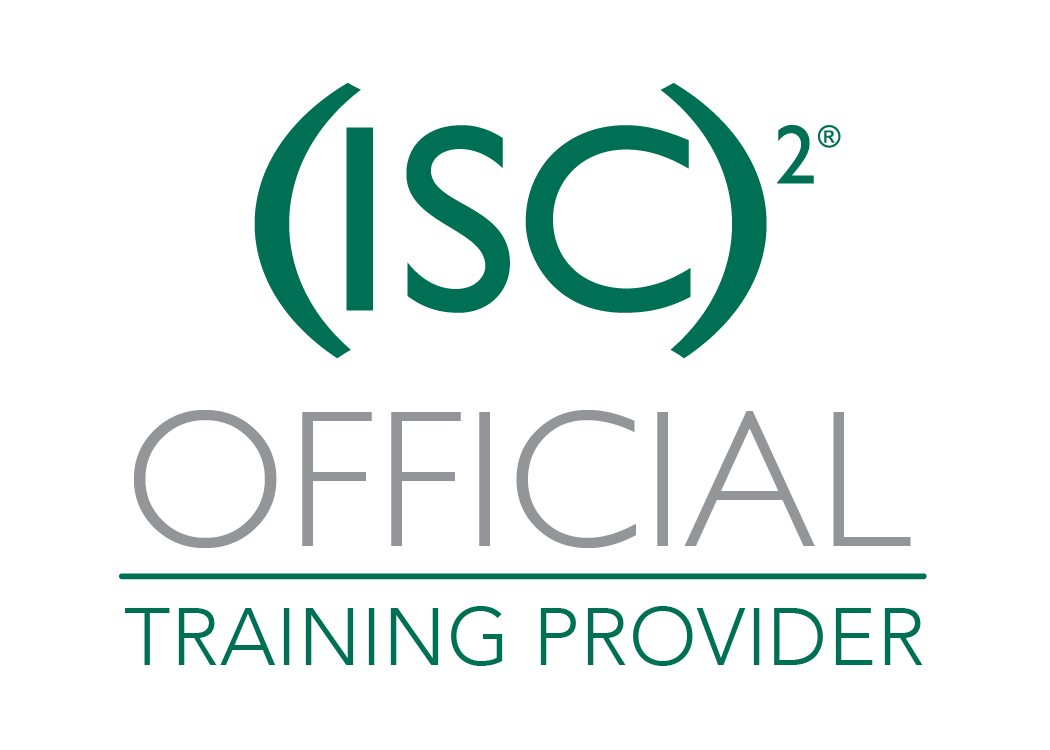Managment SI
Certified CompTIA Security +
Objectif de la formation :
La certification CompTIA (La Computing Technology Industry Association) Security + est une validation indépendante des constructeurs et éditeurs de solutions de sécurité. L'obtention de l'examen valide les connaissances et compétences requises pour identifier les risques, proposer des solutions et maintenir un niveau de sécurité adéquat. Durant la formation, des ateliers pratiques sont mis en place et des phases de préparation à l'examen de certification sont proposées aux participants.
Lors des 5 jours de la session, les participants découvrent les bases de la sécurité réseau, les dispositifs de sécurité (logiciels et matériels), les menaces et vulnérabilités des systèmes, la sécurité des utilisateurs et des applications, la gestion de l'identité et des autorisations et les méthodes de cryptographie.
A l'issue de la formation, les participants sont capables de déployer un plan de sécurité de l'infrastructure IT et d'en maintenir son intégrité. Ils sont aussi capables de se présenter à l'examen de certification.
Programme de formation :
Sécurité réseau
- Les Firewalls
- Les routeurs
- Les switch
- Les load balancer
- Les proxies
- Les passerelles sécurité Web
- Les concentrateurs VPN
- Les analyseurs de flux
- Les anti spam
- URL Filering
- Les VLAN
- Le 802.1x
- Les logs
- Les DMZ
- Le NAT
- Les accès distants
- La virtualisation
- Le cloud computing
- IPSec
- SNMP
- Les principaux ports TCP et UDP
- Le sécurité des réseaux sans-fil
La sécurité opérationnelle
- Identification des risques
- Les falses positifs
- Les règles de confidentialité
- Les politiques de sécurité
- Le calcul du risque
- Acceptation du risque
- Gestion du changement
- Gestion des incidents
- Les audits de routine
- Création de procédure suite à un incident
- Sensibilisation des utilisateurs
- Les meilleures pratiques
- Les standards
- Continuité de l'activité
- Impacts sur l'activité
- Création d'un plan de récupération sur incident
- CIA (Confidentiality, Integrity, Availability)
Les menaces et les vulnérabilités
- Les différents types de malware
- Les virus
- Les vers
- Les spyware
- Les Trojan
- Les botnets
- Les backdoors
- Les types d'attaques
- DoS
- Spoofing
- DDoS
- Spam
- Phishing
- Privilege Escalation
- Poisoning
- Replay
- Smurf
- Le social engineering
- Les attaques sur les réseaux Wi-Fi
- Les attaques sur les applications
- Les moyens de sécurisation
- Sécurité physique
- Port Security
- Validation de posture
- Gestion des rapports
- Détection d'intrusion
- Les outils
- Tester la sécurité
Sécurité des postes utilisateurs et des applications
- Fuzzing
- Concepts clés de sécurisation d'une application
- Le Cross-site scripting
- Gestion des patchs
- Les dispositifs mobiles
- La virtualisation
- Data Loss Prevention (DLP)
- Les dispositifs de cryptages
- Les dongles
- Les clés USB de cryptage
- Le cloud computing
- Sécurité des navigateurs Web
- Sécurité des protocoles d'échanges de données
- Les firewalls basés sur les postes clients
- La sécurité physique
- GPS Tracking
Gestion de l'identité et des contrôles d'accès
- Les dispositifs d'authentification
- RADIUS
- TACACS
- XTACACS
- Kerberos
- LDAP
- La biométrie
- Les ACLs
- Les Tokens
- Les cartes d'accès
- Les Smart Card
- SSO
- Les OS de confiance
- Gestion des comptes
- Gestion des rôles
- Gestion des droits
- Politiques d'identification
- Les privilèges
- La rotation des travaux
- Le deny implicite
La cryptographie
- Cryptographie symétrique
- Cryptographie asymétrique
- Le hashage
- La non répudiation
- Les algorithmes
- WEP/WPA/WPA2
- DES/3DES/AES
- SHA/MD5
- Diffie/Hellman
- Les certificats
- PKI
- Clé privée
- Clé publique
- Les serveurs de certificats
- Durée de validité
- Recovery Agent
- Les modèles de confiances
- Les listes de révocation
- Renforcement des politiques de contrôles
- NTLM
- PAP
- CHAP
- BlowFish
- SSL
- TLS
- IPSEC
- HTTPS
- RC4
Public visé pour la formation CISSP
Ingénieurs / Techniciens en informatique
Administrateurs systèmes & réseaux
Administrateur SI;
RSSI, DSI
MCSA, MCSE, CCNP, CCNA
Pré-requis
Confirmé à expert (5 ans d'expérience dans au moins 2 domaines du CBK);
Une connaissance approfondie dans le domaine de la sécurité est obligatoire (Protocole TCP/IP,…);
Examen de Certification CISSP
La durée de la formation est de 5 jours, en mode bootcamp.
Examen 90 minutes
QCM de 75 questions
750 points requis pour obtenir l'examen CompTIA Security +
Validité de la certification: 3 ans


https://www.isc2.org/trainingproviders/default.aspx#africaAffiliates
CISSP Training Course Outline
Leadership and Operations
The Official CISSP training provides a comprehensive review of the knowledge required to effectively design, engineer and manage the overall security posture of an organization. This training course will help students review and refresh their knowledge and identify areas they need to study for the CISSP exam. Taught by an (ISC)²-authorized instructor, the course features:
- Official (ISC)² courseware
- Flash Cards
- Post-course assessment
- Collaboration with classmates
not currently available for self-paced course - Real-world learning activities and scenarios
Who Should Attend
The training seminar is ideal for those working in positions such as but not limited to:
- Security Consultant
- Security Manager
- IT Director/Manager
- Security Auditor
- Security Architect
- Security Analyst
- Security Systems Engineer
- Chief Information Security Officer
- Security Director
- Network Architect
Course Agenda
- Domain 1: Security and Risk Management
- Domain 2: Asset Security
- Domain 3: Security Architecture and Engineering
- Domain 4: Communication and Network Security
- Domain 5: Identity and Access Management (IAM)
- Domain 6: Security Assessment and Testing
- Domain 7: Security Operations
- Domain 8: Software Development Security
Course Objectives
After completing this course, the student will be able to:
- Understand and apply fundamental concepts and methods related to the fields of information technology and security
- Align overall organizational operational goals with security functions and implementations
- Understand how to protect assets of the organization as they go through their lifecycle
- Understand the concepts, principles, structures and standards used to design, implement, monitor and secure operating systems, equipment, networks, applications and those controls used to enforce various levels of confidentiality, integrity and availability
- Implement system security through the application of security design principles and application of appropriate security control mitigations for vulnerabilities present in common information system types and architectures
- Understand the importance of cryptography and the security services it can provide in today’s digital and information age
- Understand the impact of physical security elements on information system security and apply secure design principles to evaluate or recommend appropriate physical security protections
- Understand the elements that comprise communication and network security coupled with a thorough description of how the communication and network systems function
- List the concepts and architecture that define the associated technology and implementation systems and protocols at Open Systems Interconnection (OSI) model layers 1-7
- Identify standard terms for applying physical and logical access controls to environments related to their security practice
- Appraise various access control models to meet business security requirements
- Name primary methods for designing and validating test and audit strategies that support business requirements
- Enhance and optimize an organization’s operational function and capacity by applying and utilizing appropriate security controls and countermeasures
- Recognize risks to an organization’s operational endeavors and assess specific threats, vulnerabilities and controls
- Understand the System Lifecycle (SLC) and the Software Development Lifecycle (SDLC) and how to apply security to it; identify which security control(s) are appropriate for the development environment; and assess the effectiveness of software security
Experience Requirements
Candidates must have a minimum of 5 years cumulative paid full-time work experience in 2 or more of the 8
domains of the CISSP CBK. Earning a 4-year college degree or regional equivalent or an additional credential
from the (ISC)² approved list will satisfy 1 year of the required experience. Education credit will only satisfy 1
year of experience.
A candidate that doesn’t have the required experience to become a CISSP may become an Associate of (ISC)²
by successfully passing the CISSP examination. The Associate of (ISC)² will then have 6 years to earn the 5
years required experience.
Accreditation
CISSP was the first credential in the field of information security to meet the stringent requirements of ANSI/
ISO/IEC Standard 17024.
Job Task Analysis (JTA)
(ISC)² has an obligation to its membership to maintain the relevancy of the CISSP. Conducted at regular
intervals, the Job Task Analysis (JTA) is a methodical and critical process of determining the tasks that are
performed by security professionals who are engaged in the profession defined by the CISSP. The results of
the JTA are used to update the examination. This process ensures that candidates are tested on the topic
areas relevant to the roles and responsibilities of today’s practicing information security professionals.
CISSP CAT Examination Information
The CISSP exam uses Computerized Adaptive Testing (CAT) for all English exams.
CISSP exams in all other languages are administered as linear, fixed-form exams
Length of exam : 3 hours
Number of questions: 100 - 150
Question format : Multiple choice and advanced innovative questions
Passing grade : 700 out of 1000 points
Exam language availability: English
Testing center: (ISC)2 Authorized PPC and PVTC Select Pearson VUE Testing Centers
----------------------------------------------------------------------
Domains Average Weight
1. Security and Risk Management 15%
2. Asset Security 10%
3. Security Architecture and Engineering 13%
4. Communication and Network Security 14%
5. Identity and Access Management (IAM) 13%
6. Security Assessment and Testing 12%
7. Security Operations 13%
8. Software Development Security 10%
Total: 100%
CGEIT®, gouvernance des SI, préparation à la certification (Certified in the Governance of Enterprise IT)
Cette formation a pour but de préparer les candidats à l'examen du CGEIT (Certified in Governance of Enterprise Information Technology), la certification internationale délivrée par l’ISACA, examen qui se déroule chaque année en juin et décembre.
Formation CISA (Certified Information Systems Auditor)
OBJECTIFS
Préparer l'examen du CISA qui est la seule certification professionnelle d'audit des systèmes d'information reconnue au plan international et délivrée par l'ISACA :
- Analyser les différents domaines du programme sur lequel porte l’examen.
- Assimiler le vocabulaire et les idées directrices de l’examen.
- S’entraîner au déroulement de l’épreuve et acquérir les stratégies de réponse au questionnaire.
Le Cloud Computing (informatique en nuage) révolutionne tous les aspects de l'informatique, parmi lesquels le matériel, les systèmes d'exploitation et les applications. Face à un environnement professionnel en constante évolution, les entreprises ont pour mission de proposer des applications et une infrastructure informatique souples. Dans cette formation, vous acquerrez les compétences et l'expérience requises pour exploiter les avantages à la fois techniques et professionnels du cloud computing. Vous développerez une stratégie efficace de mise en œuvre et apprendrez à développer et déployer des applications vers le cloud (nuage).






